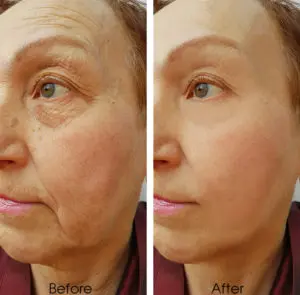Gastric Balloon

Gastric Balloon procedure is the non-invasive option for weight loss procedures. Gastric balloon procedures have been done since 1985 and have helped many people reach their weight loss goals. The gastric balloon procedures are done under mild sedation and only takes about 30 minutes. The procedure requires two steps: balloon placement and balloon removal. The gastric balloon placement is done without any incisions. The purpose of this procedure is to reduce the capacity of your stomach. By reducing the capacity of the stomach, you are able to feel fuller on smaller meals. The balloon is placed temporarily for up to 6 months. During the 6 months you will receive nutritional coaching to retrain your portion control.
You are a candidate for gastric balloon if you have a BMI between 30 and 40, been unable to lose weight through diet or exercise, or if you have one or more health related issues that affect weight loss.
The advantage of this procedure is the lack of down time and weight loss! It is a same day procedure, meaning you are able to return home the same day the balloon is placed. The procedure has minor side effects like nausea, vomiting, and abdominal discomfort in the first few days following the procedure. A common side effect while having the gastric balloon placed is acid reflux which can be managed with prescribed anti-reflux medications.During the first week it is advised to refrain from heavy activity and rest is recommended for the first 3 days. After the first week, exercise is key to meeting your weight loss goals. It is extremely important to follow diet coaching tips and check in regularly with your doctor.
Gastric Sleeve
The gastric sleeve procedure is a minimally invasive weight loss procedure that was first performed in 2000. The gastric sleeve is a laparoscopic procedure that only requires a few small incisions. This is a non-reversible procedure. During this procedure, 75% of your stomach is removed leaving a smaller version of your stomach that looks like a sleeve and takes about 1 – 2 hours. Your weight loss surgeon and anesthesiologist will consult with you and decide on general anesthesia or IV sedation. Although this is a minimally invasive procedure, a one night stay at an aftercare facility is normally recommended.
Gastric Sleeves are recommended for patients with a BMI over 40 and is the less invasive option compared to gastric bypass. People that are at risk for complications with anesthesia or for gastric bypass will find this a great alternative to meet their weight loss goals. Patients can look forward to losing 40-70% of their excess weight within the first year following surgery. Not only does this procedure help to make you feel full quicker due to smaller stomach capacity but you can expect hormonal changes such as reduced secretion of hunger hormones.
Following your procedure, you can expect your recovery nurse to get you up and walking around within 3-4 hours and pain will be managed with medication. It is recommended to take 2-4 weeks off from work or school following the procedure and after 4 weeks you can start exercising. It is common and normal to feel low energy the first 2 weeks due to decreased caloric intake but will find your energy will start to improve. The most common side effect following this procedure is acid reflux or heartburn which can alleviated with prescribed anti-reflux medications. Severe complications are very rare and if they occur it is normally within the first 10 days following surgery and can include infection, bleeding, blood clots, or stomach leaking.
Gastric Bypass

Gastric bypass is a procedure that makes changes to both your stomach and small intestine to promote weight loss. The gastric bypass surgery was first performed in 1994 as an open surgery. During this procedure a small pouch is formed and a bypass from this pouch to the small intestine is made. The changes made to the stomach and small intestine work to change the way your body digests and absorbs food for optimal weight loss. The procedure takes about 2-3 hours to complete. Here at Soma Surgery, we perform the gastric bypass surgery as a laparoscopic procedure. Your weight loss surgeon and anesthesiologist will consult with you regarding anesthesia type but general anesthesia is normally recommended. It will be recommended for you to stay at least one night at an aftercare facility for recovery.
The benefits of this procedure are quicker weight loss up to 80% following the procedure and long term results are higher than any other weight loss procedure. You are a candidate for this procedure if you BMI is over 40 or your have health related issues that affect weight. This procedure can be reversed but there are risks associated with reversal.
Following surgery for the first couple months, small soft foods and liquids can be tolerated but eventually you can gradually incorporate solid foods back into your diet. You can also expect to take vitamins such as a daily multivitamin to ensure you are still receiving adequate vitamins with your lower caloric intake. A very rare early complication can be leakage at surgical site and late complications can be vitamin deficiency or low blood sugar. You can return to work in about 2-4 works. Similar to the gastric sleeve, you will feel lower energy the first couple of weeks during recovery due to decreased caloric intake but will feel your energy improve as your body adjusts to the new caloric intake.
The loss of youthful contours in the face can be due to variety of factors, including thinning of the skin, loss of facial fat, gravity, sun damage, smoking, as well as heredity and stress. Typically, anyone who is experiencing sagginess around their face, and wants to achieve a more youthful look, and is in good health can get this procedure done.
How long has it been around? When did they start this procedure?
 Facelift surgery has been around for over 100 years, dating back to the early 1900’s. Throughout the years surgeons have crafted and perfected the techniques of this surgery and modernized to fit today’s world of modern beauty.
Facelift surgery has been around for over 100 years, dating back to the early 1900’s. Throughout the years surgeons have crafted and perfected the techniques of this surgery and modernized to fit today’s world of modern beauty.
Facelifts are typically performed in an outpatient settings. It may involve a local anesthetics and sedatives or general anesthesia. At the start of this period in the history of the facelift there was a change in conceptual thinking, surgeons started to care more about minimizing scars, restoring the subcutaneous volume that was lost during the aging process and they started making use of a cranial direction of the “lift” instead of posterior.
What is this procedure?
Depending on the degree of the changes you would like to see, your facelift choices include a traditional facelift, limited incision facelift or a neck lift. In a traditional facelift, the surgeon makes an incision in front of the ear, extending up into the hair or hairline as well as behind the ear into the hair-bearing scalp.
New methods are continually being developed to improve cosmetic procedures. Many of these procedures claim to make recovery faster and easier, but they are often modifications of a traditional facelift. A second incision under the chin may be necessary to further improve an aging neck. In General the smaller incisions lead to faster recovery. Sutures or skin adhesives close the incisions. Lasers are sometimes used for a neck-lift procedure called laser neck and jaw liposculpture and resurfacing.The work is often carried out under a local anesthetic, through a one-inch incision under the chin.
The laser is used to melt some of the fat under the chin and to tighten the skin while it heals in a more lifted manner. Forehead skin can be raised through small incisions in the frontal hairline. It is then lifted and secured to the deeper tissues to prevent further sagging or drooping. Liposuction can remove focal deposits of fat in the face, usually between the chin and the neck. It can be done as part of a facelift, or as a separate procedure.
What is the advantage of this procedure?
A facelift, or rhytidectomy, is a surgical procedure that improves visible signs of aging in the face and neck, such as:Relaxation of the skin of the face causing sagging, Deepening of the fold lines between the nose and the corner of the mouth, Fat that has fallen or has disappeared, Jowls developing in the cheeks and jaw, Loose skin and excess fat of the neck that can appear as a double chin or “turkey neck.”
Face lift surgery can restore a more natural and youthful appearance to your face, helping your personality shine through and allowing you to age more gracefully in the years to come.A facelift, like any cosmetic surgery, offers the benefit of confidence in yourself and your appearance. Appearance issues can cause relieve stress, and by getting a facelift, you can help relieve that stress. A facelift is designed to smooth your skin and firm your muscle tone to give you a more youthful appearance often making you appear 10 to 20 years younger.
What is the surgical treatment like local or sedation?
 The old way of performing an awake facelift was to place several painful injections in the face. This was only to pull and remove a minimal amount of skin in order to try and tighten the appearance of the face. The results have classically been short lived and not very impressive or natural, with regards to facial rejuvenation.
The old way of performing an awake facelift was to place several painful injections in the face. This was only to pull and remove a minimal amount of skin in order to try and tighten the appearance of the face. The results have classically been short lived and not very impressive or natural, with regards to facial rejuvenation.
The most effective and commonly performed type of facelift at our practice is a modified extended deep plane facelift. Either a SMART lift or a deep plane mini-facelift can be performed in no time and with no pain. These are groundbreaking methods for facial rejuvenation, which keep you looking like yourself but younger, livelier and more refreshed. With these lifting techniques, you can achieve the most natural and significant results imaginable in both the face and neck with no sign that a procedure was ever performed. The majority of patients’ family members only comment on their new hairstyle or that they look more refreshed and well rested, all while the changes in the before and after photos are quite clear and impressive.
Who needs this procedure?
The loss of youthful contours in the face can be due to variety of factors, including thinning of the skin, loss of facial fat, gravity, sun damage, smoking, as well as heredity and stress. Typically, anyone who is experiencing sagginess around their face, and wants to achieve a more youthful look, and is in good health can get this procedure done.
How long does it take?
The procedure can take from 2 to 5 hours, and the person can normally go home on the same day after surgery, but might take longer if other cosmetic procedures are done at the same time.
What is the recovery like?
Recovery for a facelift can vary from patient to patient, though it does take about 2-3 weeks for swelling to reduce. Most patients experience some discomfort, but medication can relieve tenderness.Bruising and swelling will be at their worst after 2 days, and they can persist for a few days. Following completion of a facelift, a bandage might be placed around your face to help minimize swelling and bruising. Small tubes may be present to draw off any excess blood or fluid that you may accumulate. You will be given specific instructions on how to care for the surgical site and drains,how to apply or take oral medication, specific concerns to look for at the surgical site or in your general health. Sutures are removed about 5 to 10 days after surgery. Numbness and muscle stiffness is normal for some time. Scars can take nearly a year to fade and tone down. You will also be reminded when to follow up with your plastic surgeon so they can assess your surgical incisions.
What can you do to speed up recovery?
It is worth remembering that while genetics play a role, a healthy lifestyle with a balanced diet and sufficient exercise can also help to maintain the appearance of the skin. Avoiding smoking and limiting alcohol intake, stress, sun exposure, and contact with pollutants can all help extend the youthful appearance of skin. The same habits can help maintain the effects of facelift surgery.
Are there non-surgical treatments?
 A nonsurgical facelift is a combination of minimally invasive and nonsurgical procedures, designed to rejuvenate and refresh the appearance. Compared with a surgical facelift, these techniques do not require large incisions, general anesthesia or overnight hospitalization. The noninvasive treatments get patients in and out of the doctor’s office quickly, with little post-op discomfort and minimal downtime. Even though you will not “go under the knife,” the anti-aging results from a nonsurgical facelift are still significant. Each nonsurgical facelift is custom-tailored to meet the individual’s unique needs. A variety of noninvasive techniques are available, addressing anything from fine lines, deep creases, lax skin, thinning lips, sunken cheeks, large pores, acne scarring and the loss of facial volume.
A nonsurgical facelift is a combination of minimally invasive and nonsurgical procedures, designed to rejuvenate and refresh the appearance. Compared with a surgical facelift, these techniques do not require large incisions, general anesthesia or overnight hospitalization. The noninvasive treatments get patients in and out of the doctor’s office quickly, with little post-op discomfort and minimal downtime. Even though you will not “go under the knife,” the anti-aging results from a nonsurgical facelift are still significant. Each nonsurgical facelift is custom-tailored to meet the individual’s unique needs. A variety of noninvasive techniques are available, addressing anything from fine lines, deep creases, lax skin, thinning lips, sunken cheeks, large pores, acne scarring and the loss of facial volume.
Several components of a nonsurgical facelift work to create a glowing complexion while skipping the needle altogether. Modern-day chemical peels are a trusted, noninvasive technique, shrinking large pores and improve overall skin quality. Dermabrasion and microdermabrasion resurface and exfoliate the skin, ridding dry and damaged tissue. Fine lines, wrinkles and hyperpigmentation are reduced as fresher skin comes to the surface. Laser and ultrasound treatments, such as Ultherapy and ThermiTight, use concentrated energy to address the deepest, foundational layers of the skin. Over the months to come, tissues become firmer and tauter.
Dermal fillers are a cornerstone of nonsurgical facelifts. These smooth-gel injectables immediately restore volume along the cheeks, temples, lips and under the eyes. Plumping sunken areas, dark shadows are eliminated, creating youthful vibrancy. Placed along the Nasolabial Folds or Marionette Lines, fillers can create definition and smooth tissues for a wrinkle-free look. Dermal fillers can be made from several products, including moisture-rich Hyaluronic Acid (HA). Their plumping and smoothing properties can last from six months to over a full year.
An important piece of the nonsurgical facelift puzzle, Botox offers unmatched wrinkle reduction. Often used to smooth forehead creases, frown lines and crow’s feet, Botox works on any dynamic wrinkle. Temporarily relaxing the targeted muscle, Botox smooths lines associated with repetitive expressions. Although Botox does not provide immediate wrinkle relief, patients will see results in one to two weeks. Benefits of Botox can last three months.
What are the complications?
Just with any other surgical procedure, facelift can have some possible complications. Complications of facelift surgery are infrequent, and cosmetic procedures are generally safe, as long as they are carried out by a qualified and experienced professional. However, any surgery comes with some risk. The risks and complications of facelift surgery include:
- Bleeding
- Bruising
- Complications of anesthesia
- Damage to the facial nerves controlling muscles, usually temporary
- Hematoma
- Infection
- Loss of hair around the incision site, but this is uncommon
- Numbness, which can improve within days or weeks
- Scarring
- Skin necrosis, or tissue death
- Unevenness between two sides of the face
- Widening or thickening of scar
Unsatisfactory results may include:
- asymmetry
- unsatisfactory surgical scar location
- unacceptable visible deformities at the end of the incisions. (It may be necessary to perform an additional surgery to improve your results).
If the patient notices inflammation, pain, redness or swelling in the days following surgery, they should seek medical help. This could be a sign of hematoma. If there is a fever, they may have an infection. Some may include but are not limited to possible hematoma, scarring, nerve injury, hair loss and skin loss. A face-lift isn’t a treatment for superficial wrinkles, sun damage, creases around the nose and upper lip, or irregularities in skin color. This procedure is not permanent, as it has to be done every 10-15 years due to the body’s natural aging process.
Before & After Gallery

